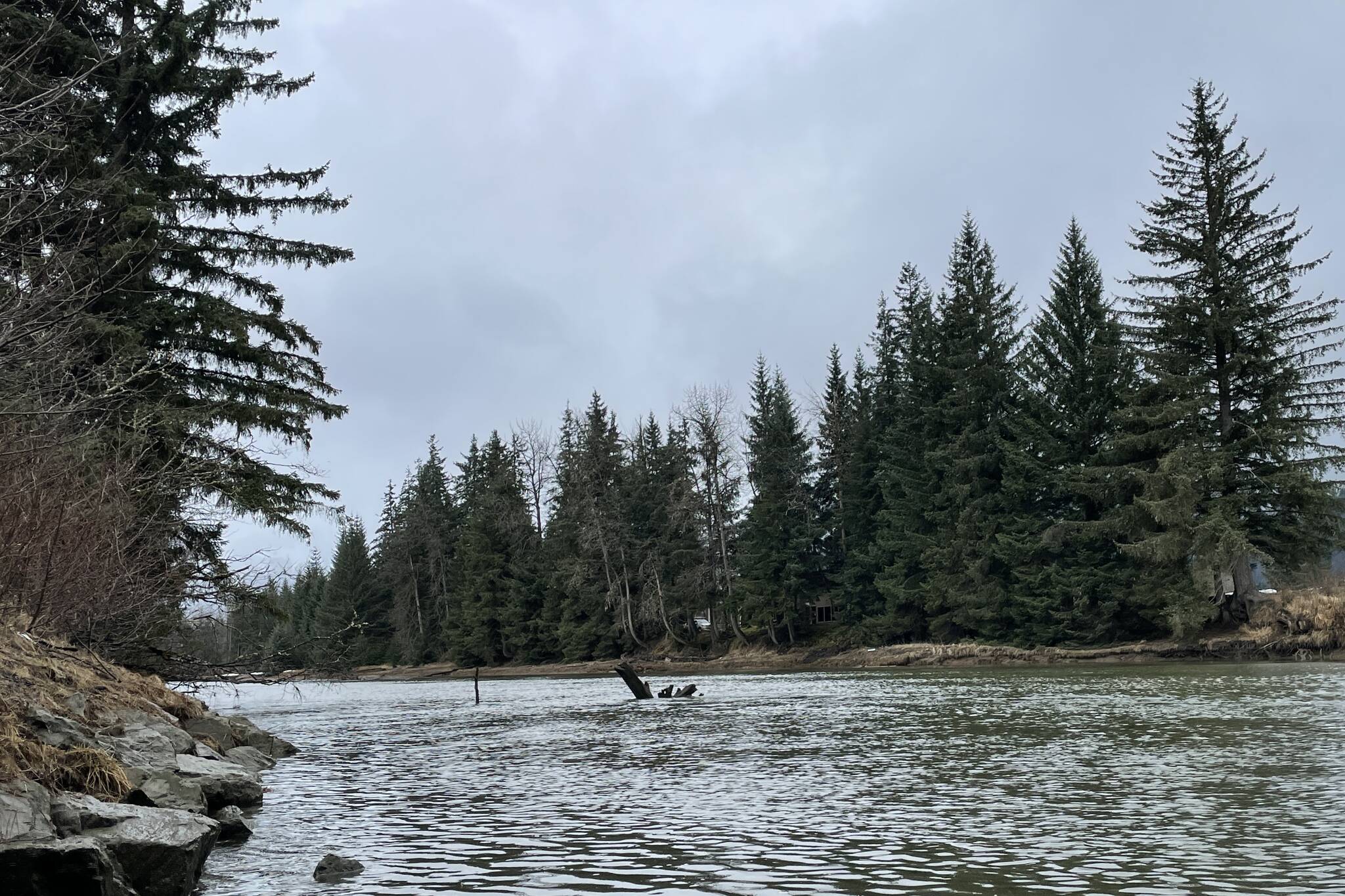The word drought might conjure mental images of bone-dry, cracked earth, but that’s not what it looks like in Southeast Alaska.
“Drought in Southeast Alaska does not look anything like what people think a drought looks like,” said Rick Thoman, an Alaska climate specialist with the University of Alaska Fairbanks’ International Arctic Research Center. “Ketchikan gets 100 inches of rain in a year, and oh, it’s in drought.”
[Military wraps up major cold-weather exercise]
From 2016 to 2019, the Southeast was in conditions classified as extreme drought by the U.S. Drought Monitor, according to the Southeast Alaska Drought Project, a recently released report.
“Every drought is different. Every drought has its own signature, its own physical quantities, its own impact,” said Andrew Hoell, a research meteorologist with the National Oceanic and Atmospheric Administration. “Precip was about 80% of average over three years. You wouldn’t think 80% of average in a rainforest is a big deal.”
Hoell and Thoman worked together on the project, analyzing the causes, impacts and future of droughts in the region. The 2016-2019 drought led to water shortages for drinking and power plants, impaired salmon hatching, insect outbreaks and more wildfires in the region.
“Temperatures were consistently high,” Hoell said in a phone interview. “Over the course of three years, they were 1 to 1.5 degrees Celsius higher than normal. A 1 to 1.5 degree bump on 5 degrees average is a big deal.”
Causes
The drought was largely caused by storms that usually travel to the Southeast from the Aleutians instead diverting elsewhere. Thoman said.
“The storm tracks were basically to the west of Southeast, or they tracked into British Columbia or the Pacific Northwest,” Thoman said. “There were episodes when it was plenty wet. But the dry episodes kept occurring.”
The higher temperatures were in line with climate change, Hoell said. Average temperatures always came down higher than average for the drought period, Hoell said.
“There was a big climate change component in this drought in terms of temperatures,” Hoell said. “The drought was very consistent, from a temperature perspective,with climate change.”
How the drought expressed itself has also varied from drought to drought in the Southeast.
“While some of the societal impacts were very, very different, some were very similar, like the sawfly impact,” Thoman said. “The hot water in streams basically delaying salmon coming back, that didn’t appear to happen in the Southeast before.”
Plant effects/affecting
While the Southeast has slingshotted back the other way, Hoell said, with a series of rain records broken over the last three years, there can be long-term effects. In Colorado, a severe drought killed vegetation which helped shore up hillsides, leading to heavy mudslides when the rain returned, Hoell said.
“Plants here tend to have very shallow root systems. Within a week, if it doesn’t rain, it starts to dry out appreciably at the soil level,” Thoman said. “For plants that have roots sunk further, that kind of precipitation deficit might not matter.”
The (relatively) high temperatures also made this drought different from those that have previously occurred in the region, Thoman said, such as one that occurred in the 1960s.
“Temperatures were much lower,” Thoman said. “That was a dry and cool drought, much different than the summer of 2019 in Juneau, where it was dry and warm.”
The time of year where the rains stay away also plays a factor in drought status, Thoman said. The dry, warm summers meant the drought conditions of 2016 to 2019 developed rapidly.
[How dry is our rainforest? Southeast experiences a rare drought]
“Part of that is the timing. If it happens in the warm season, May through August, it could develop very quickly,” Thoman said. “If it’s a dry January, that’s a very different impact.”
Higher temperatures mean the evaporation increases, as the air draws water not just from the earth but from the plants, of which there is no shortage in Southeast’s rainforests.
“Plants, trees, vegetation pull that moisture from the soil. That’s a lot of leaf area that’s extruding moisture depending on the temperature,” Thoman said. “Plants are a major factor of what we’re lumping into the evaporation factor.”
Future droughts?
Southeast has bounced back hard since 2019, with high precipitation refilling dam reservoirs and pulling all areas of the region out of drought status, Thoman said. But that’s no guarantee of the future.
“Juneau is at unprecedented high precipitation this year. Everything is back to non-drought status,” Thoman said. “Because of that possibility of rapid turnaround, we can’t say we have no drought concerns for years to come. It doesn’t work that way.”
Climate predictions for the region all point toward warmer, hotter weather in the decades to come.
“In the coming decades, there’s a pretty good agreement between the climate forecasts that precipitation will increase,” Thoman said. “They’re all tilting on an annual basis toward more precipitation.”
However, even with more precipitation called for, that doesn’t rule out the threat of droughts from dry spells, or from the less predictable effects of warmer temperatures on evaporation.
“I think that’s a key outstanding question,” Hoell said. “We’re going to have droughts in the future. What will they look like?”
• Contact reporter Michael S. Lockett at 757-621-1197 or mlockett@juneauempire.com.

